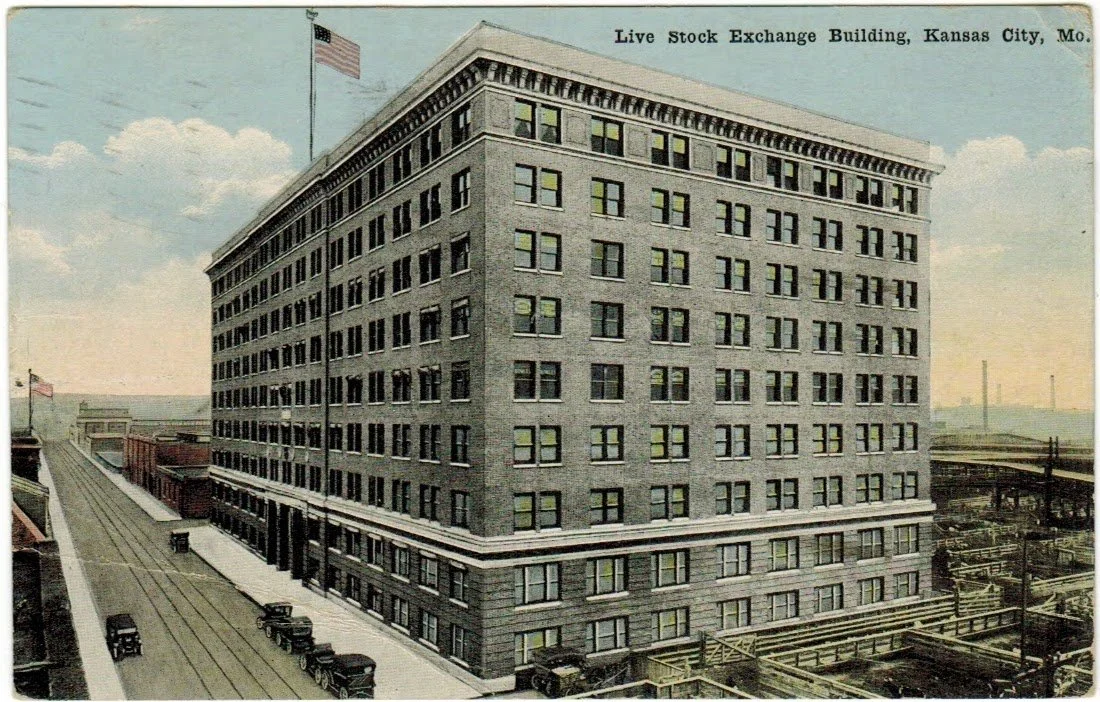Completed in 1910, the Livestock Exchange Building was designed by Kansas City architects Wilder & Wight in the Renaissance Revival style. Rising nine stories and encompassing 225,000 square feet, it was the largest office building in Kansas City at the time and represented the height of ambition for the Kansas City Stock Yards Company. More than just an office tower, it became the headquarters of one of the nation’s most important livestock markets, second only to Chicago.
Inside its walls, more than 200 commission firms, banks, telegraph offices, and rail agents conducted the daily business of buying, selling, and shipping millions of animals across the country. The Exchange served as the nerve center of the Stockyards, where prices set in Kansas City influenced markets nationwide. In 1923 alone, 2.6 million cattle and 2.3 million hogs moved through the yards, cementing the Exchange as both a commercial powerhouse and a symbol of Kansas City’s growth.
The mid-20th century brought challenges. Flooding, the rise of trucking, and the relocation of meatpacking to rural areas steadily eroded the integrated model that had sustained the Stockyards. By the 1970s, the once-bustling Exchange was largely vacant, and in 1991 the Kansas City Stockyards closed after more than a century of operation.
Rather than fade into obscurity, the building entered a new chapter. Beginning in the 1990s, extensive restoration preserved its grand staircases, tile and wood floors, and historic details while adapting its spaces for modern use. Today, the Livestock Exchange Building is fully occupied with nearly 200 tenants, including professionals, artists, and entrepreneurs. Listed on the National Register of Historic Places, it stands as both a monument to Kansas City’s livestock legacy and a cornerstone of the West Bottoms’ revitalization, proving the enduring value of preservation and adaptive reuse.
For a more extensive history, read our Expanded History here.
